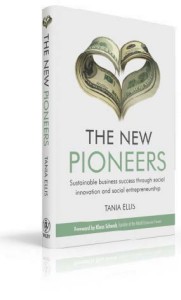The world is filled with unfulfilled community needs as a result of weak public institutions or perceived lack of market opportunity by private actors. But there are examples of how multinationals have discovered business cases where no one else had bothered looking.
One of these very successful examples is Grundfos LIFELINK, an inclusive business model for sustainable supply of safe drinking water at affordable prices created by Grundfos, one of the world’s leading pump manufacturers.
The Grundfos LIFELINK business model addresses the breakdown causes of many water projects: By Tania Ellis, The Social Business Company limitations of inadequate physical infrastructure for water and maintenance as well as restricted access to financial services.
The model – a total solution water system with a solar-powered water pump, a water tank, a remote monitoring unit and an automatic tapping unit – also incorporates a payment facility, where the users pay for the water using smart cards and mobile banking.
The payments also cover Grundfos LIFELINK’s service and maintenance of the pump stations. Any surplus from the water revenue is paid back into the community’s own account so it can invest in new development projects.
Partnerships are a critical success factor
An important aspect of Grundfos’ project is the partnerships, which they have made with various stakeholders to ensure that their solution is financed and delivered.
They have both a loan-based and a donation-based financing model and have gone into partnerships with local microfinance institutions, major NGOs like the WFP and the Red Cross, governmental institutions, private foundations, and CSR programmes.
Now, Grundfos LIFELINK is expanding operations across Africa and Asia, providing the LIFELINK technology to water utilities and development organizations working to establish long term sustainable water supply in rural and urban low income communities.
So what can we learn from Grundfos LIFELINK?
The Grundfos LIFELINK example proves that there are a myriad of business opportunities in unexplored markets. It is just a matter of leveraging your competencies as a company, and of developing original solutions to societal needs.
Think about what you do well, and think about how this can be utilized in a developing market, given the market conditions.
A last point to remember is to partner up with the right companies and organizations, as they often are the ones who hold or have access to invaluable local resources that could be a success factor of the project.
By combining the engagement of local knowledge, resources, skills and needs with the resources and technologies of commercial companies, the result may be co-creation of unique business models that create value for humanity as well as the corporate bottom line.
 The New Pioneers are this century’s generation of new leaders, social entrepreneurs, and social innovators that are turning global challenges into new business opportunities and sustainable ways of creating value.Our Case of the Month features New Pioneers that are creating new hybrids of doing business and solving society’s problems. They are showing old world companies and organizations how to tackle new world challenges for the benefit of both humanity and the bottom-line.
The New Pioneers are this century’s generation of new leaders, social entrepreneurs, and social innovators that are turning global challenges into new business opportunities and sustainable ways of creating value.Our Case of the Month features New Pioneers that are creating new hybrids of doing business and solving society’s problems. They are showing old world companies and organizations how to tackle new world challenges for the benefit of both humanity and the bottom-line.
Want to learn more about The New Pioneers? Read excerpts or buy Tania Ellis’ internationally recognized book at www.thenewpioneeers.biz










